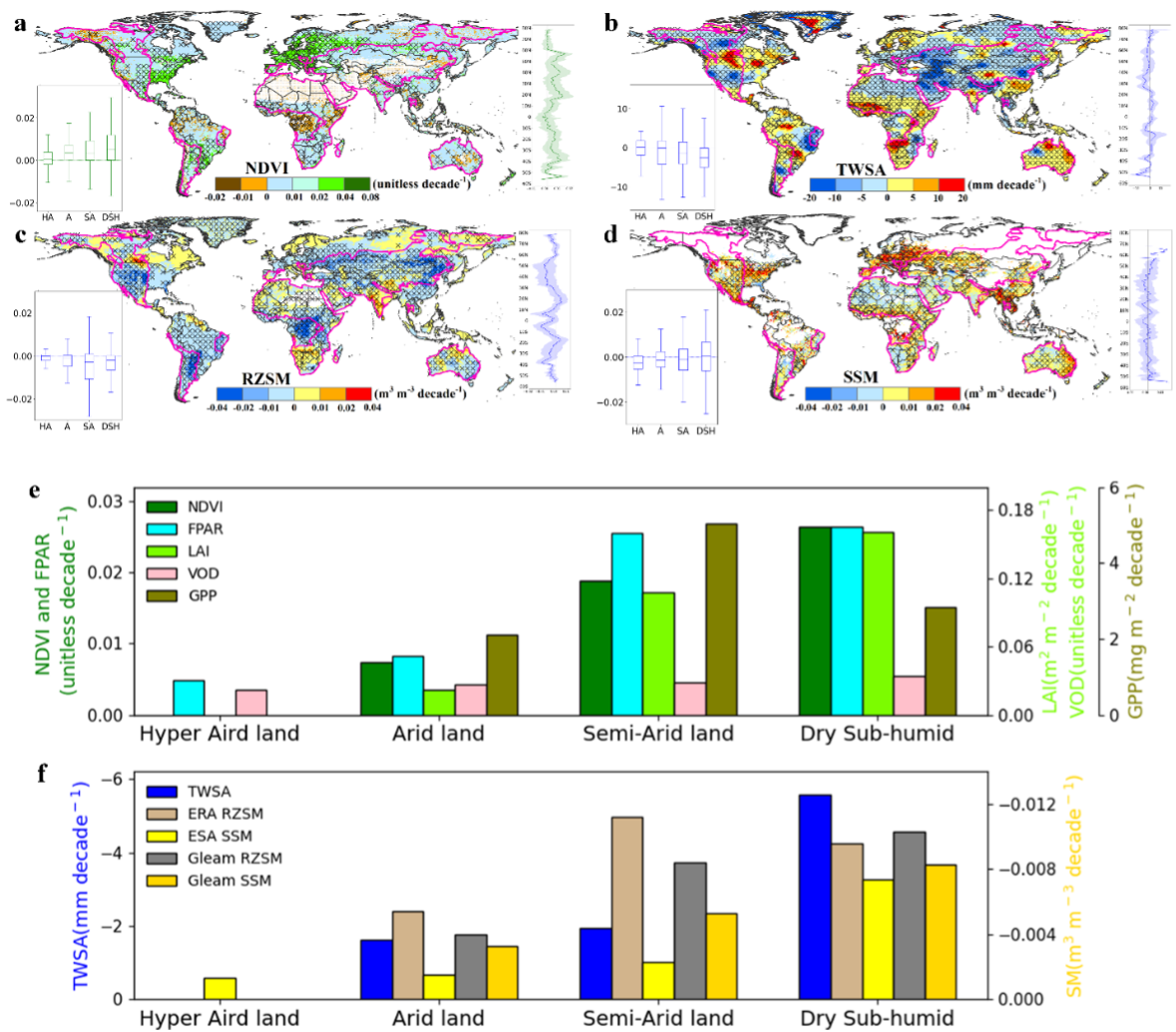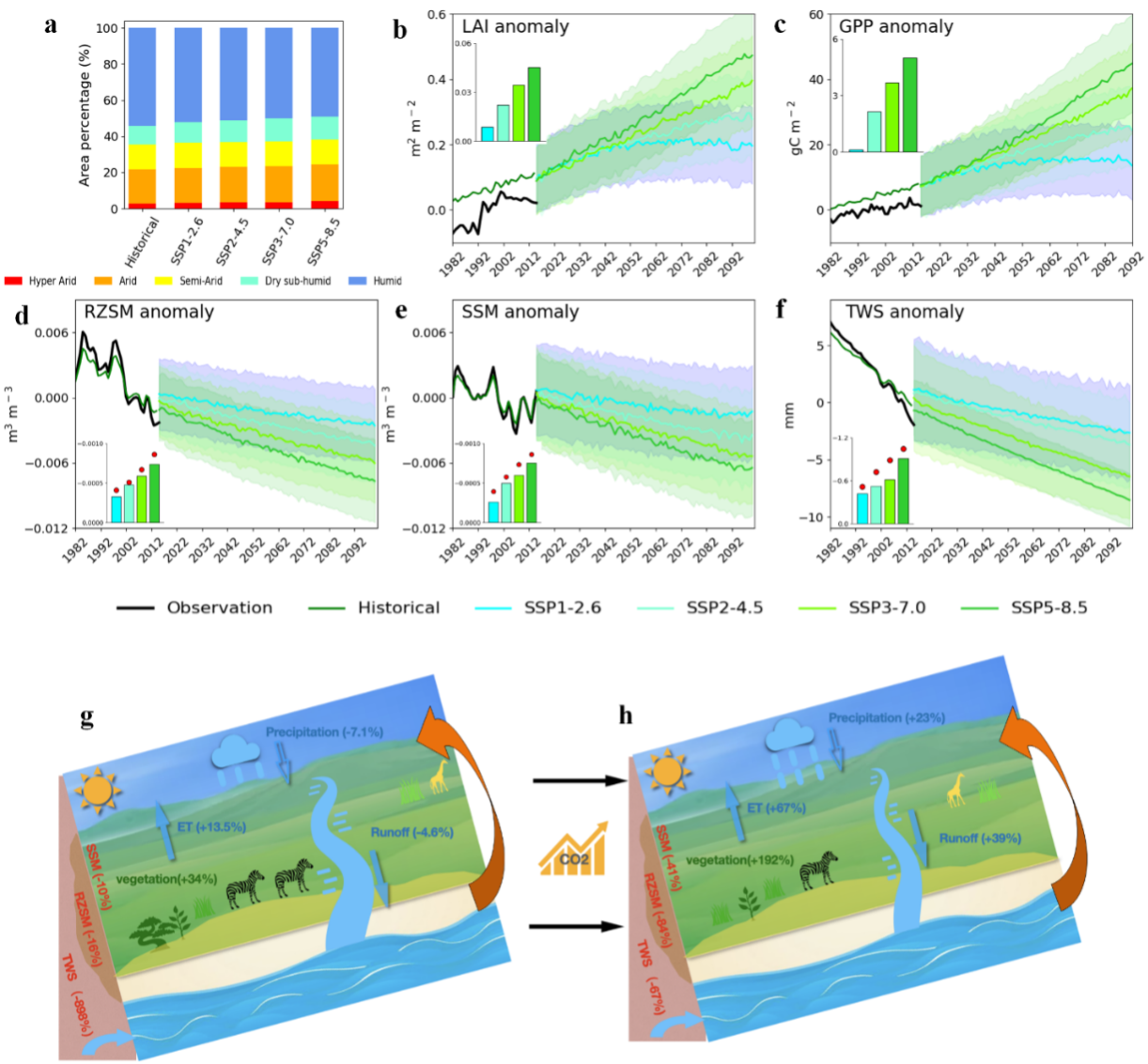Study Predicts Up to 10.6% Arid Region Expansion Globally by 2100
Sep 20, 2023
A study published at npj Climate and Atmospheric Science predicts the global evolving trends of future terrestrial water storage, forcasting that by 2100, terrestrial water storage in arid regions could decrease while arid areas might expand by 4.1% to 10.6%.
The study was conducted by a research team led by Prof. WANG Shudong from the State Key Laboratory of Remote Sensing Science at the Aerospace Information Innovation Research Institute (AIR), Chinese Academy of Sciences (CAS). The research team integrated remote sensing, Earth system modeling, and machine learning to predict eco-hydrological trends, quantifying the intricate relationship between vegetation growth and terrestrial water storage in arid regions.
Combining satellite observations and model outputs, they found global arid regions experienced increased vegetation growth from 1982 to 2016, along with decreasing terrestrial water storage. A notable inverse correlation emerged between vegetation changes in farmland-dominated arid regions and water storage, especially with high vegetation growth rates.
The research also underscored human impacts on arid hydrology. The intricate interplay between vegetation and water storage, influenced by regional factors, climate, and human activities was scrutinized. Notably, crop cultivation and livestock rearing, integral to arid areas, drive demand for water resources that facilitate vegetation growth. This reverberates globally, impacting around 5.17 billion people, especially in developing nations (64% of their population).
This research sheds light on understanding the intricacies of ecosystem variability and transitions in arid regions, and provides scientific foundation for sustainable development and effective resource management within these regions.

Variations and trends of vegetation growth proxies and terrestrial water storages over the past four decades. (Image by AIR)

Projections of vegetation growth and terrestrial water storages in dry regions. (Image by AIR)
Contact: luyq@aircas.ac.cn



News & Events